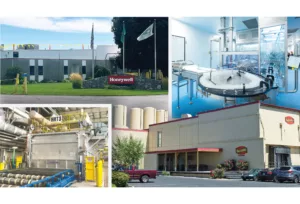Don't lose new employees to burnout
One key is not letting them wither in entry-level posts
 As managers, we have all been there. There seems to be a revolving door in Human Resources. Everyone is continually searching for that great employee. And, every once in a while, a good prospect comes walking through that revolving door.
As managers, we have all been there. There seems to be a revolving door in Human Resources. Everyone is continually searching for that great employee. And, every once in a while, a good prospect comes walking through that revolving door.
Alice is that good prospect. Alice is interviewed and quickly hired. Being new to the company and needing a test run, Alice is given an entry-level job or task to see what she can do.
This early initiation continues without fanfare within the confines of the section or department. It is heard around the coffee pot that Alice is “doing well,” “really catching on,” and is “shaping up to be a really fine employee.”
Alice is soon given her three-month review and all indications are positive. At six months, her supervisor, Tony, is ecstatic. Alice is increasing throughput and quality. Tony likes the praise from his boss and wants to keep Alice to himself. Time passes and Alice continues to do well. What a break! By every measure, Alice is excelling.
And then, without a word, Alice is giving her two-week notice and in a blink, she is gone.
What happened? Burnout happened. And it starts quickly. Combining a talented employee, a boring task, and no additional challenges is the perfect recipe for disaster. The moment Alice conquers her task and starts wondering what is next begins the downward spiral.
It happens at the moment Tony should be moving Alice to a challenging new position. But alas, time after time, Tony needs more parts, or is short-handed, and it doesn’t happen. Alice becomes increasingly bored and restless. She is already thinking of someplace new, more challenging, and more rewarding.
Why is this happening? Tony believes he is doing everything he said he would do, but Alice believes otherwise. Alice has heard of the veiled promise of a new position. So why is there silence?
Tony’s responsibility is to deal with the dilemma of making the budget and enough “parts” per day—or whatever that department is responsible for producing for the company—at a certain level of quality at a certain cost. He has monthly output, quality, and cost goals, and Alice is at least partly responsible for helping him meet these goals.
Because she is so good, Tony believes he can motivate her to do even better, do even more, and then even better and even more yet.
But as he or any production manager knows, a mature production line operates at a defined level of quality. Furthermore, that manager knows it will take a certain amount of time to do the various tasks necessary to produce the “product.”
Besides the dilemma of throughput, quality, and cost, Tony faces another, but equally difficult dilemma called “continuous improvement.” Tony is responsible for not only hitting monthly targets, but also for exceeding them whenever and wherever he can.
In fact, his compensation depends on that improvement. So Tony can ask or demand that more units per hour be produced. This requested improvement is almost always made without a change to labor, process, or quality requirements. This is especially true for entry-level jobs or tasks.
With no new equipment, no quality change, or any additional labor, what is left?
Alice is all that is left, that’s what!
She works hard and gets things done. She excels at whatever she is tasked to do. Initially she meets the improvement requests. She continually makes Tony look great. She is regularly told she has huge potential.
Alice is told she will soon be doing this, soon be doing that, but she is doing so well at her current task! Maybe she can speed up even more? Tony feels he can’t afford to move her right now. So Alice ends up being left there just one more day, and then another day, and it turns into weeks and then months. Alice has become the “expert” at an entry-level job! Was this really Tony’s intent? Was this really the company’s intent?
Alice’s time at work is now filled with thoughts of a very boring job, a head full of empty promises, and an ever-growing thought of moving on. She is disgruntled. She wakes up in the morning and is overwhelmed with the dreaded thought of going to work.
The only thing Alice wants to do now is quit. Her burnout started imperceptibly and built until finally the cork blew. Now, she’s gone.
And then where is Tony? He has lost an excellent employee, and has yet another position to fill.
This is not the atmosphere or culture a company wants to nurture. In fact, it should be just the opposite.
There are three key things a company can do to keep those rare blossoming employees happy, content, growing, and working year after year:
•Identify all the entry-level jobs within the organization. Understand they are entry-level jobs for a reason. They are easy to learn and master. They require minimal training. Make it a policy to have an employee there three months or less if possible and to rotate employees in and out, if possible.
•Learn who is good at multiple tasks. Look at who is detailed. Learn who gets things done. If an employee can’t make it at the entry-level job, replace them with someone new. Immediately.
•Develop and nurture those employees, like Alice, who have the potential. Create and implement a planned rotation advancement strategy. Remember that just because an employee is really good at the first task doesn’t mean he or she should be left there.
•Create a culture where managers talk openly about great employees. Where can they add the most value to the company, and not just in one department? Reward the management team for identifying and bringing attention to these workers.
Good-to-excellent employees can be hard to find, but when a company is lucky enough to discover one, it’s important to be able to answer the following questions: What are their strengths and weaknesses? What do they enjoy doing? How do they get things done? How do they think, and where do they want to go in the company? And then; make it happen!
Remember Alice: Good. Great. Gone.
Todd Wendle, of Hauser Lake, Idaho, spent nearly 30 years working here for Hewlett-Packard Co. and Agilent Technologies Inc., including in a number of management roles. Since 2009, he has worked for a number of other Inland Northwest companies. He can be reached at [email protected].
Related Articles
Related Products

_c.webp?t=1763626051)

_web.webp?t=1764835652)
